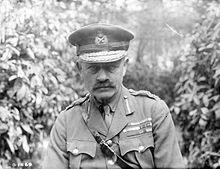(Late in part because of a cat crisis. I have been doing this now for three and a half years, and I can hardly wait until the bloody war ends. Of course, there are the peace negotiations, the post-war environment and the Russian Civil War.)
By the beginning of August it was fairly clear the Germans could not win the war; by the end of the month it was equally clear the Allies would. The Allied counterattack in response to Operation Friedensturm had by 6 August recovered virtually all of the Spring Offensive gains, and two days later the Allies launched the first of a series of assaults – collectively called the Hundred Days Offensive – that would push the Germans out of France by November. The war was hastening to an end, but tens of thousands still had to die.
On 7 August General Foch was made a Marshal of France and the next day began the Battle of Amiens (the French assault in the south was known as the Battle of Montdidier), sending 10 British, Commonwealth and French divisions and over 500 tanks along the Somme east of the city. The plan, devised by Douglas “Butcher of the Somme” Haig, sought to push the Germans further away from the vital city of Amiens and take advantage of the weakened state of the opposing German Second Army. The terrain in the area was also excellent for tanks, whose value in penetrating the trench lines – despite the constant breakdowns – was now well appreciated.
On the first day the Allies blasted a 15 mile wide hole in the German lines and advanced an average 6-7 miles, inflicting 30,000 casualties to their own 6500. Of those German losses 17,000 were prisoners, as demoralized troops began surrendering in larger numbers; Ludendorff called 7 August “der Schwarzer Tag des deutschen Heeres” (“the Black Day of the German Army”). But the rapid advance meant the troops quickly outdistanced their artillery and logistical support, and in the following days movement slowed to more familiar rates. Nevertheless, on 10 August Ludendorff began to evacuate the Amiens salient, established back in March.
The battle had, incidentally, clearly demonstrated the value of the tank in breaking through static defenses; the units without serious tank support simply could not match the progress of those with armor. On the other hand, the age of Blitzkrieg was still a ways off: of the more than 500 tanks involved only 6 remained operational on 10 August.
The major action came to an end on 12 August, and Haig refused Foch’s request to continue with the offensive, preferring to launch a new advance to the north, between Albert and Arras. Was the Butcher uneasy about the growing casualties and the old ghosts along the Somme or did he simply desire a push that did not involve the French? In any case Byng’s Third Army (which included the American II Corps) went over the top on 21 August, smashing into von der Marwitz’s weak Second Army and beginning the Second Battle of Bapaume (and the Second Battle of the Somme). Albert was captured the second day, Bapaume fell on 29 August, and Australians crossed the Somme on the 31st. By then the German line had been blasted open along a 40 mile front.
To the south the French Tenth Army had begun their own offensive (the Second Battle of Noyon) on 17 August and widened the gap in the German line, capturing Noyon on the 29th. On 26 August the British First Army, just to the north of the French, joined the offensive (the Second Battle of Arras), and far to the north in Belgium the British Second Army began a tentative advance in Flanders on 18 August. The Great War had become mobile again, and the end was drawing near for the Central Powers.
The retreat of the Germans, incidentally, forced the withdrawal of the Paris Gun, and the last shells plunged out of the stratosphere into the city on 15 August. The weapon was a marvelous piece of engineering but had virtually no effect on the war.
Meanwhile, Allied involvement in the Russian maelstrom was growing. On 1 August the Expeditionary Force under British General Frederick Poole began an assault on Archangel and captured it the following day when pro-Allied forces overthrew the local Soviet. That same day Japan determined to send troops to Vladivostok, presumably looking for territorial gains, and on the 11th the first units arrived; British troops had already landed at the city on the 3rd. On 4 August a British force entered oil-rich Baku on the Caspian Sea, and two days later London announced that the British would not be involving themselves in Russian affairs, a declaration that must have rung a bit hollow.
On 5 August the last German airship raid on England took place, unsuccessfully. In the course of the war there had been 51 airship and 59 airplane bombing attacks on the United Kingdom, killing 1392 people and injuring 3330. Apart from initially creating some panic the bombing had no real effect on the war, but efforts to defend against it laid the foundation for British air defenses in the Second World War.
Finally, on 13 August the Czecho-Slovaks declared their independence at Prague. The Austro-Hungarian Empire was breaking up.

















